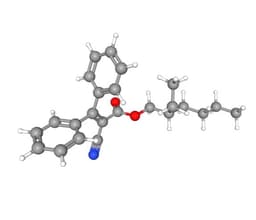Octocrylene

Summary: A chemical UVB filter that is photostable and stabilizes avobenzone, but raises environmental concerns due to aquatic persistence.
Published on: 23/04/2025
Octocrylene is a UV filter used in sunscreen formulations to absorb UVB and short UVA radiation, typically between 280–320 nm [1]. It is oil-soluble and contributes to product water-resistance [2] and improved photostability of less stable filters like avobenzone [3].
Safety and Regulatory Status
Toxicological reviews have concluded that octocrylene is not genotoxic or carcinogenic at concentrations allowed in cosmetics [4,5]. It is generally well tolerated, and allergic contact dermatitis has rarely been reported [4]. Some in vivo studies suggest potential endocrine-disrupting effects, but the current evidence is not conclusive [5].
In the EU, octocrylene is permitted in cosmetic formulations at concentrations up to 10% [5].
Environmental Impact
Octocrylene has been found in a wide range of aquatic environments, including swimming pools and coastal waters [1,6]:
-
There is scientific evidence that octocrylene can harm certain marine invertebrates, such as sea urchins and mussels. In these species, environmental concentrations of octocrylene have been shown to exceed the 'No Observed Effect Concentration' (NOEC), which is the highest concentration at which no harmful effects are observed in toxicity tests [6].
-
In corals, some laboratory studies have reported biological changes — like disruptions in metabolism and mitochondrial function — but these effects have not yet been confirmed in real-world reef environments. Therefore, current environmental concerns about octocrylene are based on early laboratory evidence and remain precautionary until further research is done [6].
Conclusion
Octocrylene is a widely used and photostable UVB filter that plays a key role in stabilizing other filters like avobenzone. It is approved for use at up to 10% in the EU and considered safe in that range, although research is ongoing into its environmental impact.
References
-
Medici, A., Saviano, L., Siciliano, A., et al. (2022). Octocrylene: From sunscreens to the degradation pathway during chlorination processes: Formation of byproducts and their ecotoxicity assessment. Molecules, 27(16), 5286.
https://www.mdpi.com/1420-3049/27/16/5286 -
Choquenet, B., Couteau, C., Paparis, E., & Coiffard, L. (2008). Development of an in vitro test to determine the water-resistance of sunscreens. Die Pharmazie – An International Journal of Pharmaceutical Sciences, 63(7), 494–496. https://www.ingentaconnect.com/contentone/govi/pharmaz/2008/00000063/00000007/art00009
-
Gaspar, L. R., & Maia Campos, P. M. B. G. (2006). Evaluation of the photostability of different UV filter combinations in a sunscreen. International Journal of Pharmaceutics, 307(2), 123–128.
https://pubmed.ncbi.nlm.nih.gov/16289662/ -
Berardesca, E., Zuberbier, T., Sanchez Viera, M., & Marinovich, M. (2019). Review of the safety of octocrylene used as an ultraviolet filter in cosmetics. Journal of the European Academy of Dermatology and Venereology, 33(Suppl 7), 25–33.
https://pubmed.ncbi.nlm.nih.gov/31588614/ -
Scientific Committee on Consumer Safety (SCCS). (2021). Opinion on Octocrylene (CAS No 6197-30-4, EC No 228-250-8), Final version adopted at the plenary meeting on 30–31 March 2021. SCCS/1627/21.
https://health.ec.europa.eu/document/download/2928185b-f8b7-474e-937a-052a90a90970_en -
Watkins, Y. S. D., & Sallach, J. B. (2021). Investigating the exposure and impact of chemical UV filters on coral reef ecosystems: Review and research gap prioritization. Integrated Environmental Assessment and Management, 17(5), 967–981.
https://doi.org/10.1002/ieam.4411